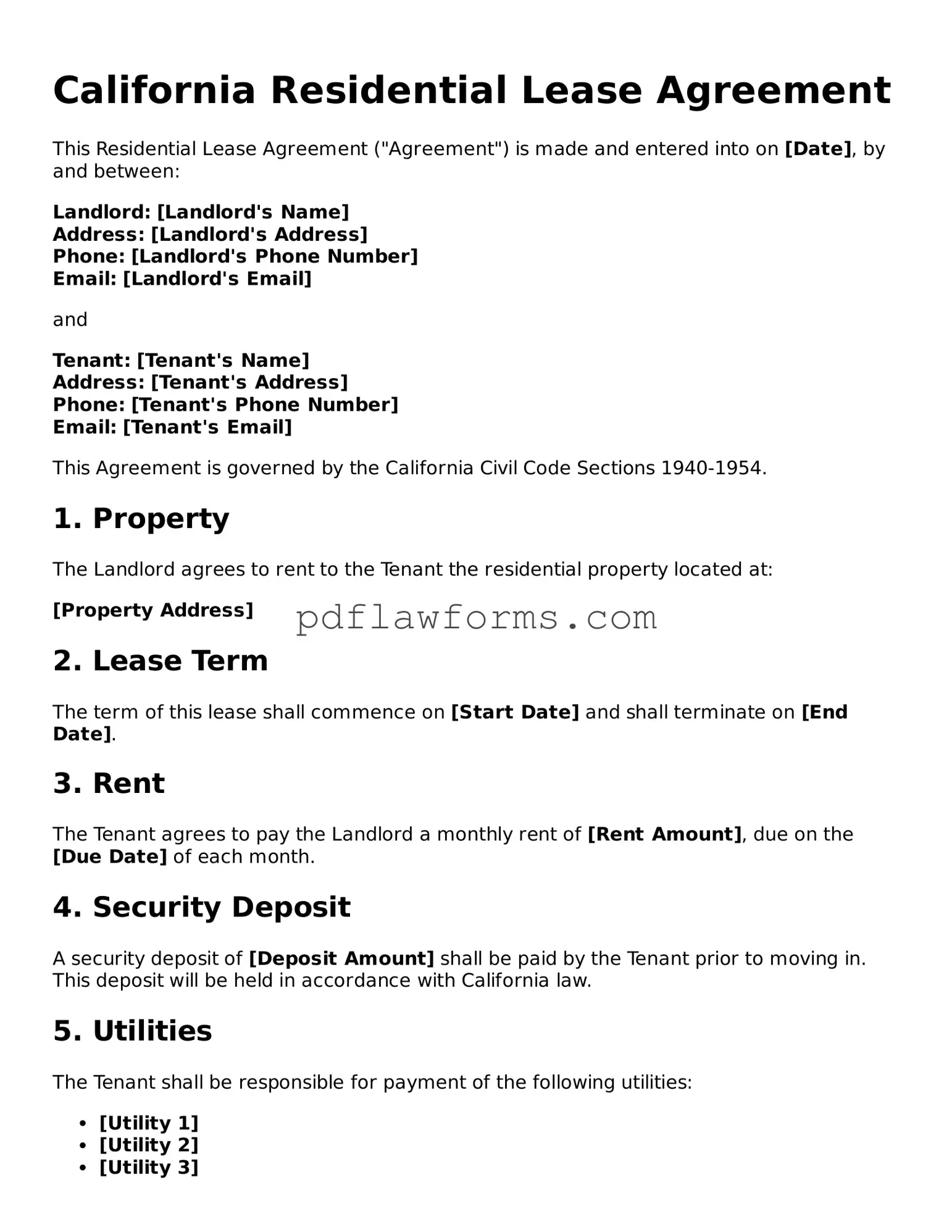Filling out the California Residential Lease Agreement form can be a straightforward process, but many people make mistakes that can lead to complications later. One common error is failing to include all necessary parties in the agreement. It is essential to list all tenants and co-signers. Omitting someone can create confusion about who is responsible for the lease terms.
Another mistake often made is not specifying the rental amount clearly. Rent should be stated in both numerical and written form to avoid any misunderstandings. If the amount is unclear, disputes may arise over how much rent is actually due.
People frequently overlook the importance of the lease term. The agreement should clearly state whether it is a month-to-month lease or a fixed-term lease. Not defining the duration can lead to uncertainty about when the lease begins and ends, which can complicate matters for both landlords and tenants.
Additionally, many individuals neglect to address security deposits properly. The amount of the deposit should be clearly stated, along with the conditions for its return. Failure to outline these details can result in disputes when the lease ends.
Another common error is not including maintenance responsibilities. The lease should specify who is responsible for repairs and maintenance. If this is not clearly defined, it can lead to disagreements over who must take care of issues that arise during the tenancy.
Finally, people often forget to include any rules or regulations that apply to the property. This can include pet policies, noise restrictions, or parking rules. Without these details, tenants may not understand their obligations, which can lead to conflicts with the landlord or neighbors.
